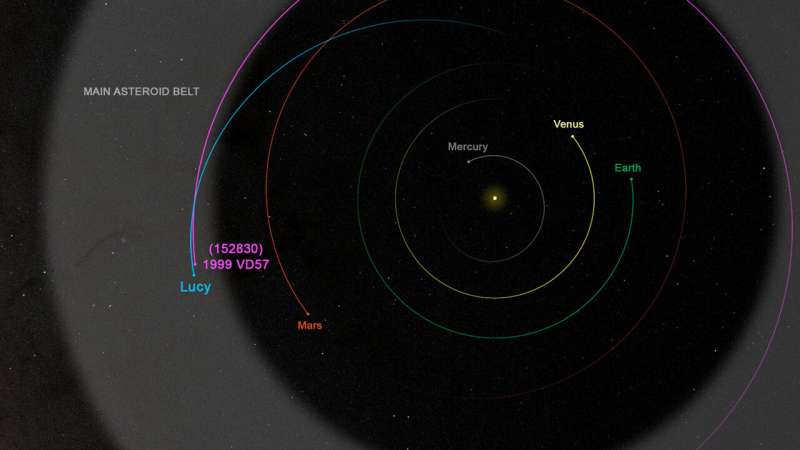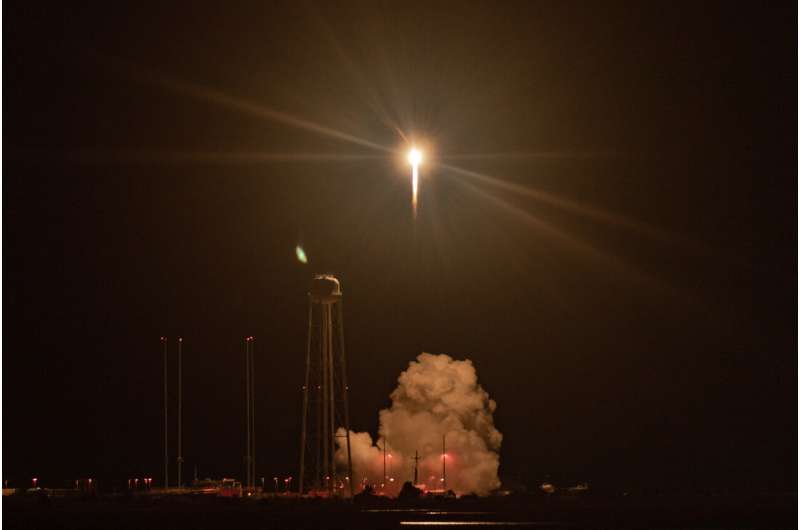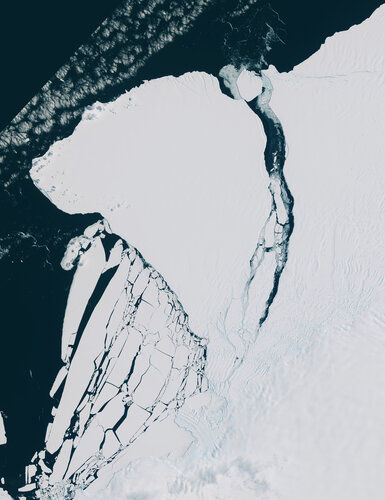
Copernical Team
Isar Aerospace and Spaceflight Inc sign launch agreement to service global market
 European launch service company Isar Aerospace, and U.S.-based Spaceflight Inc., the leading global launch services provider, announced they have signed a multi-launch services agreement. Under the agreement, Spaceflight secured one dedicated launch in 2026 to a sun-synchronous orbit taking off from Andoya, Norway and an option to add an additional dedicated launch to occur in 2025.
"We've
European launch service company Isar Aerospace, and U.S.-based Spaceflight Inc., the leading global launch services provider, announced they have signed a multi-launch services agreement. Under the agreement, Spaceflight secured one dedicated launch in 2026 to a sun-synchronous orbit taking off from Andoya, Norway and an option to add an additional dedicated launch to occur in 2025.
"We've SwRI-led Lucy team announces new asteroid target
 NASA's Lucy spacecraft will add another asteroid encounter to its 4-billion-mile journey. On Nov. 1, 2023, the Southwest Research Institute-led Lucy mission will get a close-up view of a small main belt asteroid to conduct an engineering test of the spacecraft's innovative asteroid-tracking navigation system.
The Lucy mission was already on course to break records by its planned visit of n
NASA's Lucy spacecraft will add another asteroid encounter to its 4-billion-mile journey. On Nov. 1, 2023, the Southwest Research Institute-led Lucy mission will get a close-up view of a small main belt asteroid to conduct an engineering test of the spacecraft's innovative asteroid-tracking navigation system.
The Lucy mission was already on course to break records by its planned visit of n Perseverance marks 1 Martian Year at Jezero
 Perseverance and the team recently celebrated one Martian year (668 sols or 687 Earth days) on the Red Planet while continuing to offload sample tubes at the "Three Forks" depot location. The celebration also marked the end of the prime mission at Jezero as the team transitions into the extended mission phase and sets their sights on the delta top.
It has been a fitting celebration and end
Perseverance and the team recently celebrated one Martian year (668 sols or 687 Earth days) on the Red Planet while continuing to offload sample tubes at the "Three Forks" depot location. The celebration also marked the end of the prime mission at Jezero as the team transitions into the extended mission phase and sets their sights on the delta top.
It has been a fitting celebration and end NASA validates revolutionary propulsion design for deep space missions
 As NASA takes its first steps toward establishing a long-term presence on the Moon's surface, a team of propulsion development engineers at NASA have developed and tested NASA's first full-scale rotating detonation rocket engine, or RDRE, an advanced rocket engine design that could significantly change how future propulsion systems are built.
The RDRE differs from a traditional rocket engi
As NASA takes its first steps toward establishing a long-term presence on the Moon's surface, a team of propulsion development engineers at NASA have developed and tested NASA's first full-scale rotating detonation rocket engine, or RDRE, an advanced rocket engine design that could significantly change how future propulsion systems are built.
The RDRE differs from a traditional rocket engi NASA system predicts small asteroid to pass close by Earth this week
 On Thursday, Jan. 26, a small near-Earth asteroid will have a very close encounter with our planet. Designated 2023 BU, the asteroid will zoom over the southern tip of South America at about 4:27 p.m. PST (7:27 p.m. EST) only 2,200 miles (3,600 kilometers) above the planet's surface and well within the orbit of geosynchronous satellites.
There is no risk of the asteroid impacting Earth. Bu
On Thursday, Jan. 26, a small near-Earth asteroid will have a very close encounter with our planet. Designated 2023 BU, the asteroid will zoom over the southern tip of South America at about 4:27 p.m. PST (7:27 p.m. EST) only 2,200 miles (3,600 kilometers) above the planet's surface and well within the orbit of geosynchronous satellites.
There is no risk of the asteroid impacting Earth. Bu Lucy spacecraft set to encounter new asteroid target

NASA's Lucy spacecraft will add another asteroid encounter to its 4-billion-mile journey. On Nov. 1, 2023, the Southwest Research Institute-led Lucy mission will get a close-up view of a small main belt asteroid to conduct an engineering test of the spacecraft's innovative asteroid-tracking navigation system.
New NASA safety system enables Rocket Lab launch from Wallops

A revolutionary NASA flight safety system has enabled a new era of space transportation with the successful flight of Rocket Lab U.S.'s Electron rocket Jan. 24, from NASA's Wallops Flight Facility in Virginia.
This mission, the first Electron launch from the United States, was enabled by NASA's work in developing the NASA Autonomous Flight Termination Unit (NAFTU), a critical piece of flight safety technology required for this mission.
ESA chief vows to restore Europe's access to space

ESA’s digital Historical Archives open online

We’re marking 20 years of the European Centre for Space Records in ESA ESRIN, Frascati, one of the physical homes of the ESA Archives, by giving access to our digital holdings in a new web portal.
Giant iceberg breaks away from Antarctic ice shelf

Satellite imagery confirms an enormous iceberg, around five times the size of Malta, has finally calved from Antarctica’s Brunt Ice Shelf. The new berg, estimated to be around 1550 sq km and around 150 m thick, calved when the crack known as Chasm-1 fully extended northwards severing the west part of the ice shelf.
This crack was first revealed to be extending in early 2012 after having been dormant for some decades. After several years of desperately clinging on, image data from the Copernicus Sentinel missions visually confirm the calving event.

